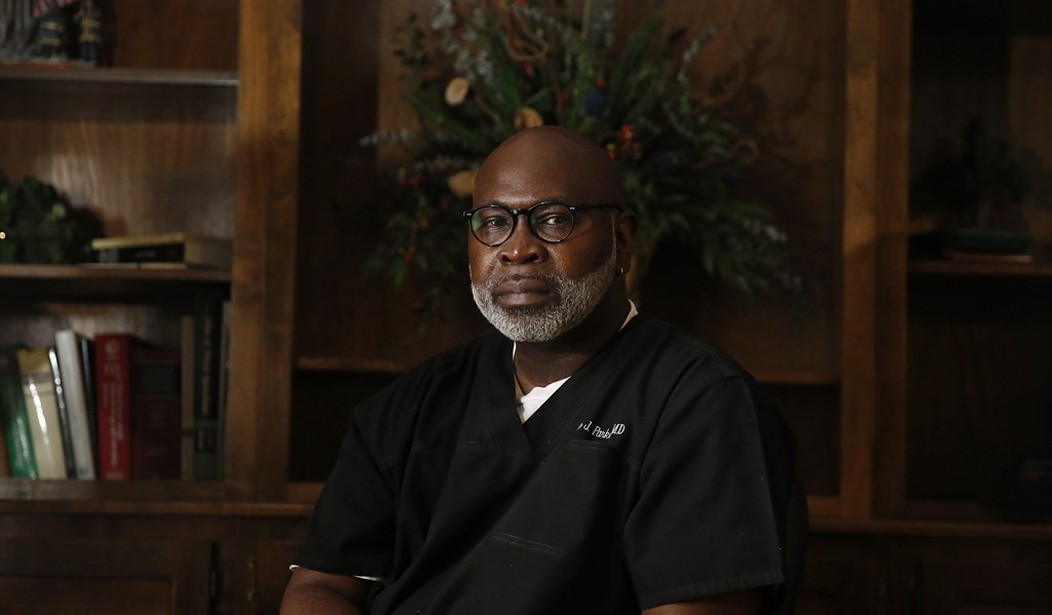Abortionist Willie Parker has a difficult time deciding what gives human beings value. He claims that his judgments are grounded in facts. But he justifies performing second trimester abortions by citing the “medical truth” that “Before twenty two weeks, a fetus is not in any way equal to ‘a baby’ or ‘a child.’ It cannot survive outside the uterus because it cannot breathe – not even on a respirator. It cannot form anything like thoughts.” That statement may be grounded in medical truth. But it is also grounded in bad philosophy.
For most people, the first impulse upon reading such a statement is to explore the specific implications of killing innocent human beings simply because they are unable to survive on their own. But such an exploration is unnecessary, given that Willie Parker actually performs abortions beyond the twenty-two week mark. That is why Parker continues to search for other ways to distinguish between being human in a biological sense, and being a person in a philosophical sense. This leads him to try to identify some characteristic or function that begins to appear after the 25-week mark, beyond which Parker says he will not perform an abortion.
Parker makes the claim that up until 29 weeks there is a scientific consensus that the unborn “cannot feel anything like pain.” Thus, he advances the idea that physically assaulting an innocent human being is justifiable provided that the victim cannot feel any assault taking place. It is worth noting that many rapists drug their victims and commit sexual assault only after she has passed out and is thus unable to feel anything. Surely, we would never accept “no pain, no crime” as a legitimate defense in a court of law. Nor should we accept it in the court of public opinion.
In addition to claiming an absence of pain for the unborn, Parker invokes the concept of pain in order to justify abortion as a positive good. He does this by referring to the procedure as a “palliative solution to psychic pain.” By that, Parker means that abortion is often a source of stress relief for a pregnant woman. He explains in psychological terms how stressful pregnancy can be for a woman saying, “Bringing a child to adulthood is a gamble in the best of cases, and no individual ought to be forced into taking that risk if, after careful reflection, she decides the costs in this instance are too great to bear.”
Recommended
So what kinds of costs are too great? A few pages later in his book, Life’s Work: A Moral Argument for Choice, Parker gives an example of a college student who was a middle distance runner. She wanted an abortion and she wanted it fast because she did not want the pregnancy to affect her performance on the track. She wanted to know “how soon could she resume her training?” Specifically, she wanted to know if she could get back on the track the same day that she had an abortion. Parker had to break the bad news that she would probably have to miss a day or two of training. But he assured her that the rest could be good for her times in the long run, so to speak.
It is therefore fitting that a doctor who will kill innocent human beings so they will not interfere with the athletic pursuits of other human beings would himself train like an athlete in order to be a more efficient abortionist. Here is how Parker describes his training to become efficient enough to abort fifty humans in a single day:
“I wanted to be present for every woman, no matter what her situation. So I would go to the local Planned Parenthood clinic and perform abortions, over and over, like the athlete who goes to the gym after practice to shoot three pointers. Some days I saw fifteen women. Some days, thirty. However many patients showed up, I trained myself always to have the energy and concentration to see one more. I wanted to get to the point where the procedure was automatic, a synthesis of muscle memory and mental vigilance, allowing me to know instinctively both what was right and normal – in a woman who had uterine scaring from a cesarean section, in a woman with fibroids, in a woman who is obese – and how to react in a moment when something went wrong – how to avoid perforating the uterus and how to spot unusually heavy bleeding – the way an experienced driver swerves out of the way of an obstacle on the highway without becoming flustered or having to think consciously about what to do.”
This is the kind of training necessary to ensure that a woman has a relatively painless procedure that in fact reduces the “psychic pain” associated with pregnancy. But performing so many abortions so quickly must be at least potentially dangerous. There must be some risk associated with the failure to evacuate the parts of the entity that lost a life during an otherwise painless procedure. How are such risks avoided?
Parker explains exactly how he does this in his book. But in the process he makes an unintentional admission that undermines his case that abortion merely kills humans who are not yet fully persons.
… To be continued.

























Join the conversation as a VIP Member